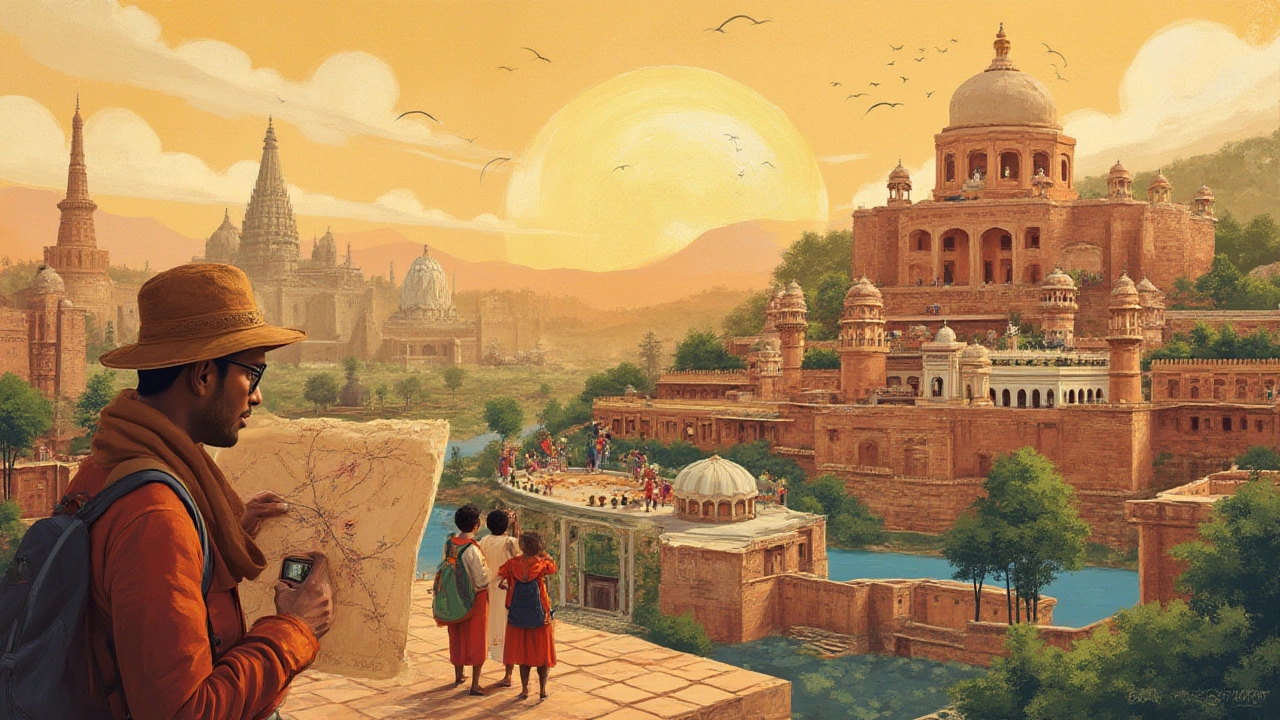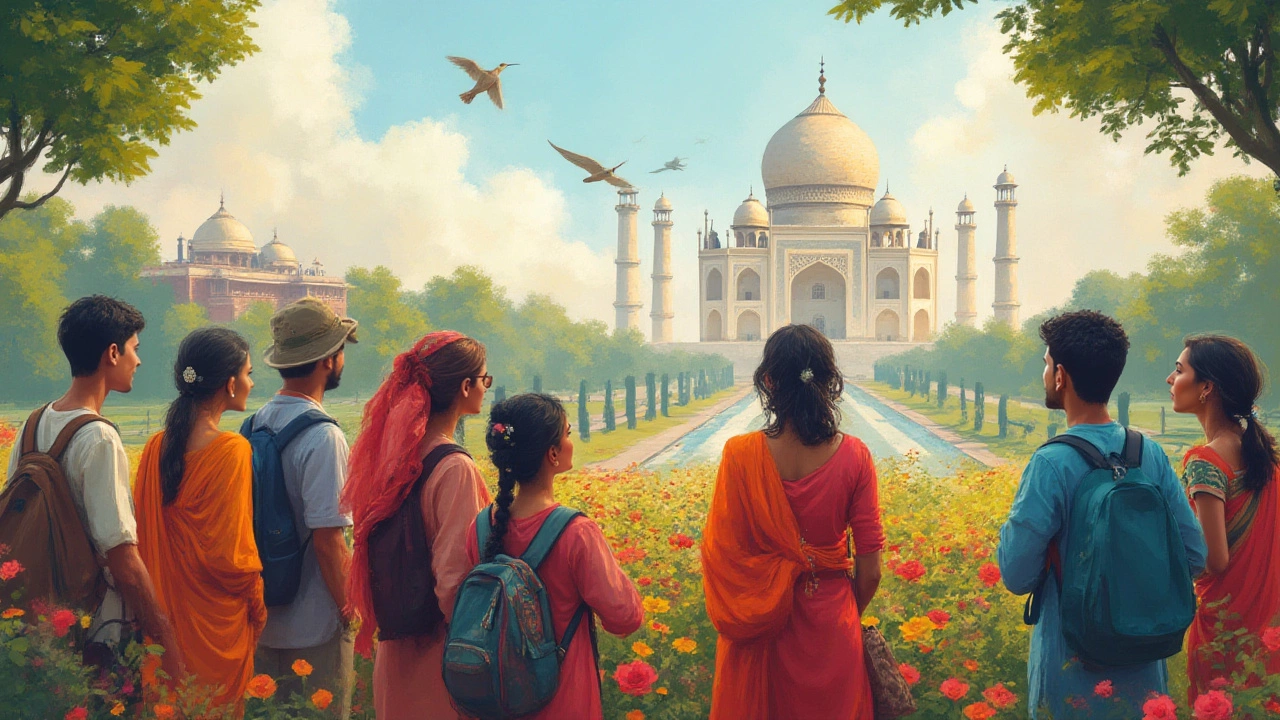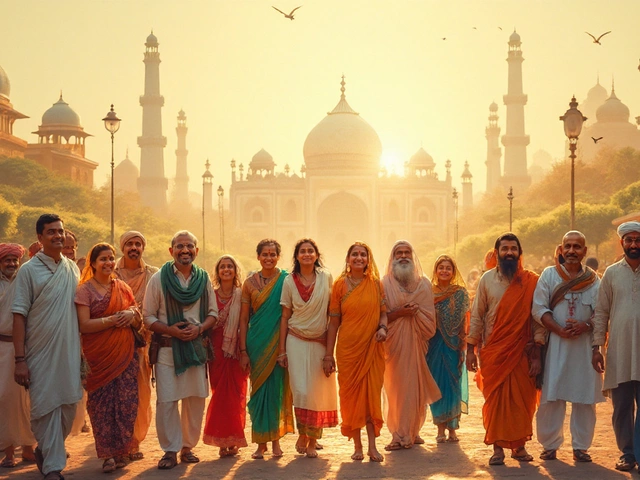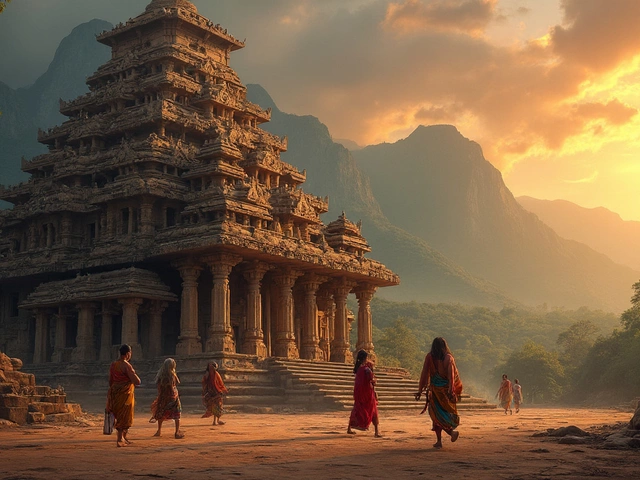Ever been so awestruck by a photo of the Taj Mahal or the neon glow of Times Square that you left your dog at home and found yourself halfway across the country, or even the world, to see it? That’s the power of man-made attractions. They don’t pop up on their own—humans dream them up, pour in the sweat, and sometimes even change the course of history creating them. Whether you’re standing in front of ancient pyramids or zipping up a glass elevator in a supertall skyscraper, these places prove that there’s no shortage of creativity or ambition in people. Sometimes, I wonder if Max, my dog, would appreciate the view from the Eiffel Tower more than chasing squirrels at the park. Probably not—but for us humans, man-made attractions aren’t just places; they’re proof of what we can do when we’re stubborn, imaginative, and maybe a little show-offy.
Understanding Man-Made Attractions: What Sets Them Apart?
So what are man-made attractions, really? In basic terms, they’re places, structures, or entertainments manufactured by people for others to see, experience, or enjoy. Think of human effort carved into stone, cast in bronze, or lit up with millions of LED bulbs. They stand out because, unlike natural wonders, they didn’t happen by accident. The difference starts with intention—no mountain grows because a committee voted for it, but every theme park begins with a blueprint. Man-made attractions can be ancient or modern, spiritual or secular, massive or charmingly tiny.
One real divide is purpose. Natural sights exist thanks to geology and time. Man-made spots? Someone decided the world needed a great wall or a palace. The draw comes from that “wow, humans did this?” feeling. These creations can be entire cities (think Venice, floating on water), monuments (like India Gate), museums (the Louvre, bursting with treasures), or engineered marvels (like the Palm Jumeirah forever altering Dubai’s coastline). Or they’re made for pure fun—think about Universal Studios, Disney parks, or massive Ferris wheels like the London Eye.
Here’s a cool thing: man-made attractions reflect the moment they’re built. The pyramids show what was possible in Egypt 4,500 years ago; the Burj Khalifa shows what’s possible right now. Travel to these places, and you really are traveling in time, seeing the skills, beliefs, and priorities of ages gone by.
People often forget how these places fade and reappear in fashion. Stuff considered kitschy or unremarkable can become hot tourist spots decades later. Just look at the High Line in New York—a converted rail track, now one of the city’s must-see sights for travelers. Or, consider wonders lost in war or neglect, only to be rediscovered by a generation craving history. Man-made attraction is a dynamic term, always evolving as we innovate and as the masses decide what’s worth seeing.
It’s not just age or grandeur that matters. Sometimes, it’s scale, sometimes cleverness. Miniature parks where you can tour the world in an afternoon are hugely popular in some places. Other times, the “man-made” element isn’t a building but an event: think Rio’s Carnival or Diwali celebrations in India, where the spectacle itself draws millions.
Here’s the bottom line: if humans built it primarily for others to see or experience—be it a palace, a garden, a dam, or the world’s largest ball of twine—it’s a man-made attraction. The only rule? It wouldn’t exist this way without us.
From Ancient Icon to Modern Marvel: A Brief History of Man-Made Attractions
The urge to build things that amaze and attract goes as far back as people do. In fact, the Seven Wonders of the Ancient World were basically the first celebrity attractions—places pilgrims traveled for weeks or months just to behold. The Great Pyramid of Giza is the only one left standing today. It was a beacon for both pharaohs and tourists, and it set the bar high for bragging rights.
As the centuries rolled on, different civilizations created their own wonders. Medieval cathedrals, epic forts, and palaces like India’s Red Fort or Versailles in France weren’t just for locals—they drew travelers from lands far away, even before Instagram made it easy to flaunt the visit. Travel accounts from the 1200s rave about seeing the Hagia Sophia or the pyramids. These journeys took effort—weeks on horseback, months by ship. The chance to stand beneath these structures was worth every hardship.
Fast forward to the big boom of the 19th and 20th centuries. This is when tourism truly became a “thing.” Transportation got quicker and safer, and suddenly, you didn’t have to be royalty or a monk to cross continents. That’s when cities started building grand railway stations, public museums, and even amusement parks meant just for fun. The world’s fairs—like the 1889 Eiffel Tower debut in Paris—set off a wave of construction everywhere. Suddenly, every city wanted an unmistakable symbol to draw crowds.
And then came the skyscraper race, theme parks, and ultra-modern engineering feats. Bridges spanned wild rivers, metros ran under metropolises, and architects started thinking bigger. The last fifty years have been a contest: Who can build the tallest? The most futuristic? Or the most Instagrammable?
One thing that hasn’t changed: people chase novelty. Whatever’s newest or tallest or oldest tends to make headlines, attract TV crews, and set off tourist booms. For example, ticket sales for the London Eye hit over 3.75 million annually a decade after opening, proving that even in a world full of old treasures, new inventions can still win hearts (and phone cameras).
What’s funny is how the meaning of “attraction” keeps shifting. Buildings abandoned after their original use—like factories, prisons, even old subway lines—can become hotspots with just a little creative spin. Urban explorers, restoration buffs, and history nerds keep the past alive, turning overlooked ruins into the new must-see.
If history has one guarantee, it’s that tomorrow’s man-made wonders are already being sketched somewhere. The mix of tradition and novelty is what makes exploring them addictively fun.

Famous Man-Made Attractions and What Makes Them Special
So, which man-made spots do the crowds flock to again and again? The classics usually win—think Eiffel Tower, Great Wall of China, and the Statue of Liberty. But each one stands out for a reason beyond just being there.
The Taj Mahal, crowned “the world’s most beautiful building” time and again, draws up to 8 million visitors every year. It’s not just the marble and the symmetry—it’s the story of love and loss behind it, which makes every travel selfie a little more dramatic. The Great Wall, at over 21,000 kilometers long, was built over centuries by millions, using simple tools and brute strength. Now, it hosts a marathon, boasts cable cars, and welcomes about 10 million people each year.
Not all famous spots are ancient. The Burj Khalifa in Dubai, the world’s tallest building at 828 meters, took a staggering $1.5 billion and six years to build. People line up just to see the view from the top. Same with the London Eye, built for the millennium but quickly becoming a symbol of the city—it spins about 1,200 times each year, giving riders a fresh angle on old London.
Parks and themed resorts are heavy hitters, too. Walt Disney World in Florida remains the most visited theme park on Earth, with over 58 million guests annually. Tokyo’s teamLab Borderless digital art museum is now a hotspot for the TikTok generation, proving a man-made attraction doesn’t always have to be stone, steel, or centuries old.
Here’s a quick look at just a few headline stats that say it all:
| Attraction | Location | Annual Visitors (approx.) |
|---|---|---|
| Taj Mahal | India | 8 million |
| Great Wall of China | China | 10 million |
| Burj Khalifa | UAE | 6 million |
| London Eye | UK | 3.75 million |
| Disney World | USA | 58 million |
Of course, there are thousands more, big and small—from Berlin’s urban murals to Mumbai’s Gateway of India. What makes them special isn’t just the size or cost, but the stories tied to them, the experiences people have there, and the way they become tied to the identity of whole countries or cities. Landmarks often become the face of tourism, used on postcards, TV shows, and, yes, social media posts.
And if you’re curious about the slightly weirder side, there’s no shortage of quirky, offbeat attractions: the world’s largest rubber band ball, upside-down houses, or entire museums dedicated to potatoes (Sweden, really!). These prove that creativity knows no boundaries, and sometimes the biggest crowds line up for the oddest sights.
Tips for Enjoying Man-Made Attractions: Planning and Pitfalls
So you’ve got the man-made bucket list in your sights, and you’re ready to set off. The experience of visiting these places can be magical, but a bit of planning makes a world of difference. First tip? Always book tickets ahead when you can, especially for places like the Vatican Museums, the Louvre, or any popular observation deck. Nothing kills the mood like hours spent stuck in a line.
Check opening times—festivals, maintenance, or even weather can close down access some days. And don’t just Google the main website; dig for recent traveler reviews for intel on crowds, construction, or best hours. Early mornings and weekdays tend to be quietest—trust me, sunrise photos are always better without a million selfie sticks in the way.
Bring the right gear. Big outdoor sites (like forts, gardens, or steps at the Great Wall) call for sneakers and a water bottle. For museums or galleries, pack a portable charger—interactive displays and maps eat up phone batteries fast. And, if you have a Max of your own at home, check if dogs are allowed or plan for a pet-sitter. Most indoor attractions don’t allow pets, but outdoor parks sometimes do, and documenting your dog’s travels could spark a great Instagram trend.
- Budget ahead: Some attractions pack hidden costs—parking, locker rental, photo permits. Check the full price before banking on your daily travel allowance.
- Watch for scams: Major sites are magnets for touts, pickpockets, and fake ticket sellers. Buy only from official counters or trusted apps.
- Respect the place: Ancient sites are fragile, and rules matter. Don’t climb ruins, touch priceless art, or litter. Nothing ruins a wonder like careless tourists.
- Learn a little history: Even the shortest stories about why a place was built, who built it, or what it’s been through will make your visit a lot more fun and meaningful.
- Make time to wander: The best memories don’t always happen at the busiest viewpoint. Take a walk around, explore side streets, or chat with staff or locals—hidden gems hide everywhere.
If crowds are your worst nightmare, seek out lesser-known marvels. Instead of just checking off landmarks, ask around for underrated places. Sometimes a quiet, offbeat museum or an oddball art installation hits the spot far better than battling for space at more famed spots. Apps like Atlas Obscura and local blogs can help you dig up hidden treasures.
One last thing: take your time. Snap your photos, yes, but don’t miss the all-around experience. Soak up the atmosphere, people-watch, listen to the sounds—these moments linger long after you scroll past the photos. And hey, if you start to miss your dog, remember you can always find a furry local greeter or two lounging in the shade—they appreciate a bit of attention, too.



